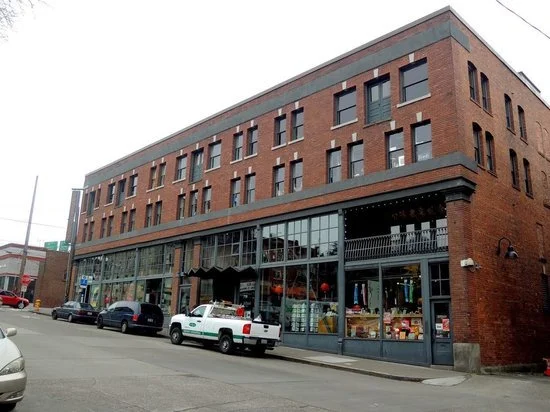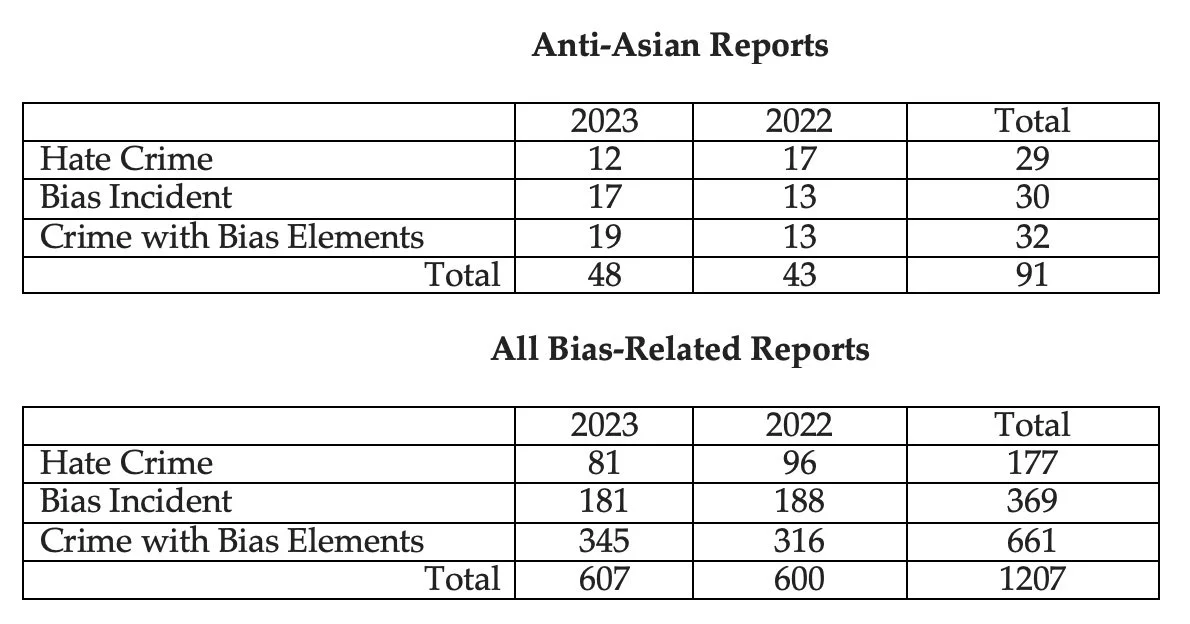Broken Glass Sparks a National Conversation on Anti-AAPI Hate
/The Wing Luke Museum in Seattle (Source: Tripadvisor)
The fun faded when fastidious scientists reclassified glass as an amorphous solid. Despite a revised state of matter, in certain circumstances broken glass can still attract a crowd. On the eve of the Millennium, protests against the unfettered internationalism espoused by the World Trade Organization (WTO) changed Seattle overnight from Gateway to the Pacific to Conscience of the Earth. And the anarchy kept lots of brooms sweeping.
Vandalism suspect Craig Milne, age 76, may have been taking a cue from 1999 if on September 14, 2023 he expected to bring likeminded xenophobes to Seattle’s Chinatown/International District by shouting racial epithets while taking a sledgehammer to the windows of the Wing Luke Museum.
Construction workers try to clear broken glass at the Wing Luke Museum (Erika Schultz / The Seattle Times)
WTO protestors had legitimate concerns about environmental damage and worker exploitation attributed to rampant capitalism. Milne’s acts of intimidation and anti-Asian Hate were more aligned with Kristallnacht, the Night of Broken Glass in 1938 when Nazis and their sympathizers shattered the windows of Jewish businesses and homes throughout Germany.
In the Spike Lee-directed movie Do the Right Thing, the Mookie character, also played by Spike Lee, posits that breaking a window can spark mass hysteria. But all Milne’s sledgehammer did was outfit him with a red jumpsuit and broadcast an alert to other racists without a cause to remain outside a fifty-kilometer radius of 719 King Street.
After his arrest, Milne told the King County Attorney’s Office, “The Chinese ruined my life. The Chinese have tormented me for fourteen years. I don’t regret anything I did here.”
Wing Luke Museum executive director Joël B. Tan sees the incident as a microcosm of a viewpoint that is palpable, though not preponderant, in the most populous city in the Pacific Northwest. “During the pandemic, we saw a rise in anti-Asian hate crimes and a significant amount of racial tension,” recalls Tan. “So, while I believe there are allies in this community, the rise of anti-Asian hate, ongoing racial tensions in our community and the recent hate crime against the Museum shows that racism is alive and well here.”
What Law Enforcement Can Do for Asians Vs. What It Does
The attack happened at a time when the reputation of the Seattle Police Department (SPD) was reeling after body camera video emerged of Officer Daviel Auderer’s commentary while he was investigating the death of South Asian-American Jaahnavi Kandula, age 23, on January 23, 2023. On a phone call with Mike Solan, President of the Seattle Police Officers Guild, Auderer, a Vice President in the Guild, assumed that SPD would “write a check” to compensate relatives for their loss. He pegged an equitable amount for a “regular person” like Kandula at “eleven thousand dollars.”
To put his comments into context, Kandula was fatally struck by a police vehicle driven by fellow Officer Kevin Dave. Whether Auderer believed SPD officers have the authority to appraise human life isn’t as disturbing as his blithe disregard for Asian American women as unworthy of equal protection by a man who took an oath to protect every person.
While the Wing Luke Museum attack has no direct correlation to the Kandula tragedy, it may represent an opportunity to redeem SPD’s image a little. There isn’t an officer more eminently qualified to spearhead image restoration than Detective Judinna Gulpan, an SPD Public Information Officer who happens to be Fil-Am and quite affable.
For Positively Filipino, Gulpan compiled the latest comparison data on bias/hate crimes in Seattle presented verbatim. The figures cannot possibly include the volume of incidents that go unreported by Asians and non-Asians.
“This means that Anti-Asian hate crimes only account for 16.4 percent of hate crimes in 2022 and 2023,” Gulpan proposes in an email.
The 16.4 percent is proportionately balanced for a city whose Asians represent 17 percent of all 753,665 residents (demographic figure from California State University, San Bernardino Center for the Study of Hate and Extremism).
Gulpan explains, “The Seattle Police Department continues to work with our CID (Criminal Investigations Division) and AAPI communities in the prevention and intervention of bias and hate crimes occurring within our city.
“There has been a rise in anti-Asian crimes recently. In response, we’ve utilized different methods of communicating best practices in multiple languages to ensure information is being received, providing additional police presence when staffing allows, engaging with the community to continue building trusting relationships, and investigating these incidents thoroughly to hold those responsible accountable for their actions.”
SPD’s progress, she concludes, “Has been made evident with the arrests in multiple cases involving AAPI communities. However, there is more work to be done.”
Making the Best of a Bad Situation
Glenn D. Magpantay is a Fil-Am civil rights attorney and Commissioner in the United States Commission on Civil Rights (USCCR). As one of eight commissioners who advise President Joe Biden and Congress on civil rights, Commissioner Magpantay operates on a national stage which gives him a perspective that departs from the provincial affairs of a city.
Glenn Magpantay (Source: LinkedIn)
He sees Seattle’s approach to handling the Wing Luke attack as a broader alternative to the limited scope of federal laws in classifying hate crimes. “It is best that the Museum work with the Seattle Police Department and King County Sheriff’s Office because in many states the state law is broader and more inclusive in more hate incidents.
“Under federal law, a federal ‘hate crime’ must result in the ‘death or serious bodily injury’ of the victim because of bias.”
Despite deficiencies in federal laws, Commissioner Magpantay works diligently to ensure that the federal government acknowledges the grievances of AAPI populations. His insights from being the only AAPI commissioner helped inform the annual statutory report titled “The Federal Response to Anti-Asian Racism in the United States, which was released by USCCR on September 23, 2023.
“This year,” he states, “the Commission examined the troubling spike in hate crimes and discrimination against persons of Asian descent in the U.S. following the start of the COVID-19 pandemic. The investigation found that between March 2020 and June 2021, there were over nine thousand reported hate incidents against persons of Asian descent. To understand the rise in bias and hate incidents and address the misperception of ethnic diversity within the Asian community, the report looked into the role that harmful stereotypes against Asian communities have played throughout history and its propagation by the news, media, and government officials.”
The report highlights challenges that inhibit an acceptable response to AAPI hate crimes, including that “the benchmark to prove a hate crime is high, so even in states with comprehensive hate crime legislation, successful prosecutions are low.”
Societal transformations that come from new laws don’t top Magpantay’s list of demands before AAPI individuals of all ages are safe from hate crimes. He’s pragmatic in emphasizing the real-life plight of Asian immigrants, who are most vulnerable to unprovoked attacks and least likely to report them.
“After his arrest, Milne told the King County Attorney’s Office, ‘The Chinese ruined my life. The Chinese have tormented me for fourteen years. I don’t regret anything I did here.’”
Based on the commission’s findings, Magpantay insists, “Greater language access will make an enormous impact for the Asian American community. One in five Asian Americans speak a language other than English at home. A third (34 percent) of the Asian American population is limited English proficient. The most frequently spoken languages are Chinese, Korean, Vietnamese, Tagalog, Thai, Khmer, Bengali, Gujarati, Hindi, and Punjabi.”
When he speaks or writes, Commissioner Magpantay is forthright and informed in advocating for the safety of his community. Yet he understands that actions are stronger than words, so his interviews contain the link to a New York Times article with video of the brutal attack that took place against a Filipina woman in Times Square in 2021.
The Wing Luke Museum attack was costly, but what is really at stake goes beyond damage to valuable property. For symbolism, breaking glass might fall into the same category as flag burning as a form of expression that is protected under the First Amendment. Milne stated his grievance at the crime scene. While his expression of enmity toward Chinese people doesn’t meet the federal threshold of a hate crime, his message had a hateful intent that might still resonate with a people who are capable of committing worse acts than vandalism.
Anthony Maddela contributes articles and profiles on Fil-Ams who stand out for their talent, community work and artistry primarily in California. He also enjoys writing fiction and is a freelance copywriter. He lives in Los Angeles with his family.
More articles from Anthony Maddela








